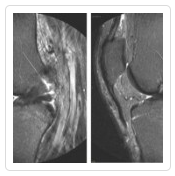ACL RECONSTRUCTION IN TEENS
An estimated 35 million American kids play a sport every year. And while athletics are a great way for students to stay in shape, make lifelong friends and learn valuable skills like cooperation and teamwork, orthopedic specialists are noticing an increasing number of ACL injuries among student athletes. According to an NBC report, the rate of ACL injury among young athletes has risen a staggering 400 percent in the last ten years.

The ACL is a crucial ligament in that it allows for side-to-side movement as well as bursts of speed. However, the ACL is also an easy ligament to tear, especially for those teens and young people who participate in fast-moving or contact sports like soccer and football.
When the ACL is injured, patients typically experience a popping sensation in the knee. Over the next 24-48 hours, the knee becomes swollen and painful. Patients may find it difficult to bear weight in the wake of an ACL tear, or experience debilitating stiffness or soreness. When left untreated, an ACL injury can put an end to promising young sports careers or reduce one’s ability to participate in beloved athletic hobbies. Additionally, those with untreated ACL injuries are likely to suffer cartilage tears.
Traditionally, doctors have waited to perform ACL reconstruction for younger athletes until the patients have stopped growing. During ACL surgery, doctors drill tunnels through the tibia and femur. For younger patients whose growth plates may still be open, experts worried that damage could occur as a result of the drilling process. However, new technology is making it easier for orthopedic surgeons like Dr. Eric Millstein to treat ACL injuries in younger athletes. The 3-D MRI lets doctors plan out their ACL procedures with increased precision before the operation. This technology helps doctors reconstruct the ACL in younger patients without disturbing the growth plate, thereby allowing some athlete to return to play sooner.ACL surgery is not right for everyone, and some patients may benefit from physical therapy or bracing the knee. However, for
ACL surgery is not right for everyone, and some patients may benefit from physical therapy or bracing the knee. However, for student athletes and those patients who have had limited success with more conservative treatments, ACL surgery can help speed up recovery by relieving pain and swelling and restoring movement in the knee. Although ACL injury patients will still need to undergo physical therapy to strengthen the quadriceps and hamstrings in most cases, ACL reconstruction can help student athletes get back into the game faster.
If you’re considering ACL injury surgery for yourself or for your teenage athlete, it’s important that you consult with an experienced, board-certified orthopedic surgeon. A member of the American Academy of Orthopaedic Surgeons and the American Orthopaedic Society for Sports Medicine, Dr. Millstein has been recognized as a Southern California Super Doctor on more than one occasion, and has extensive experience working with ACL injuries in both children and adults.
Don’t let an ACL injury stop you from participating in the sport you love. If you would like more information about ACL injury reconstruction, feel free to call our Beverly Hills offices today at (310) 595-1030 or contact us online.

